
Anatoliy Golembievsky, WWII disabled vet.
Ivan Kurtov/TASSDuring World War II alone, about 4 million Soviet citizens were demobilized, due to injuries and diseases; about 2.5 million of them were disabled war veterans, of which 500 thousand of them had lost limbs. Did the Soviet state rehabilitate and help people, who hopelessly undermined their health or partially lost their abilities defending their homeland, reintegrate into society? On paper, yes. In reality, the situation of the disabled in the USSR was very much akin to the situation of the mentally ill or convicts.
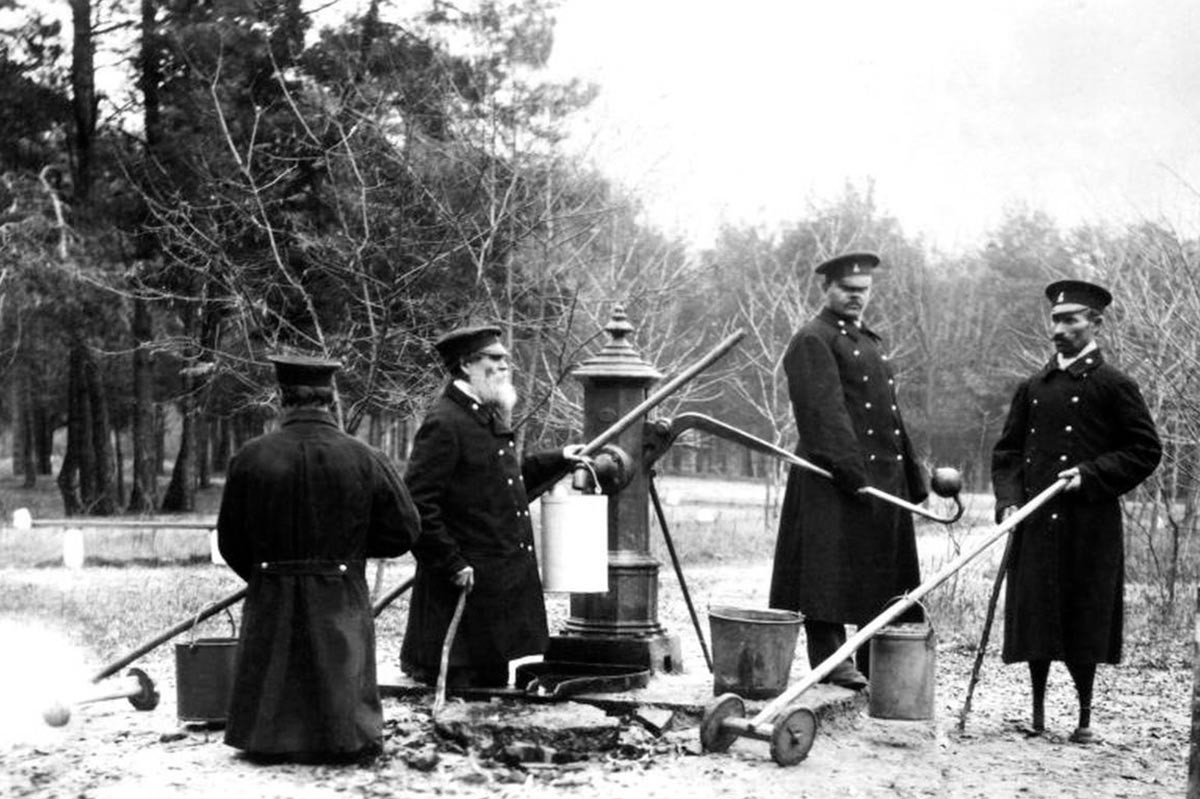
Disabled people at the well. The Western branch of the House of Emperor Alexander II for disabled railway employees. 1901.
Public DomainBefore the revolution, a special state structure, the Department of the Institutions of Empress Maria, created by the wife of Emperor Paul I, Maria Feodorovna, was engaged in caring for the maimed disabled in the Russian Empire. After the death of the Empress in 1828, the department became part of the Emperor’s office – which means it was under their personal jurisdiction. The Institutions of the Empress Maria managed all charity of the empire and were in charge of orphanages, homes for the deaf and blind, charity schools and vocational schools. The system was funded mainly by the treasury, but also accepted private donations.
After the Bolshevik Revolution, “charity and alms” were declared a “relic of the old time” – the Soviet state, according to Lenin’s plan, was not to accept donations from the rich, but to provide regular social assistance to people of any level of wealth in need of such. For this purpose, the People’s Commissariat of Social Security was created. However, in the 1920s - 1930s, only the disabled of the Red Army received any real help. “Ordinary” disabled people had to cope with difficulties in the same conditions as the rest of the Soviet citizens.
After the Civil War, Soviet Russia was overflowing with street children and people who had lost relatives and a roof over their heads. As Dmitry Sokolov writes in his article ‘Crossed out of life: The Fate of disabled people in the USSR’: “Many of these people became victims of measures to ‘clean up’ cities. The authorities grabbed people off of the streets of Moscow, Leningrad, Kharkov and Sochi and sent them to special settlements in poorly adapted areas for living.” Soviet police, created in those times from scratch, preferred to simply take people without documents from the street, fulfilling a given working plan. During the spring of 1933 alone, around 39,000 people were sent to Siberia, among whom there was, according to the Omsk branch of state security, “a significant part of the disabled, the elderly and women with young children”. Disabled people worked in mines and lived on a par with other settlers in tents and barracks.
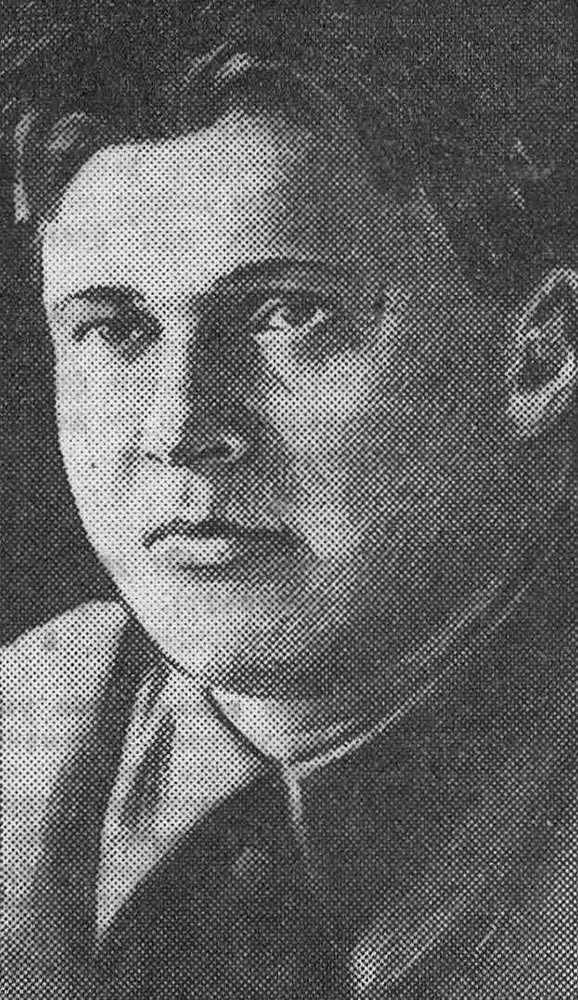
Leonid Zakovsky, the man infamously responsible for hundreds of executions of the disabled in the USSR.
Public DomainThe attitude to the disabled in the capitals is perfectly described by the phrase of one of the commanders of the ‘Great Terror’, Leonid Zakovsky. In 1938, Zakovsky was transferred from Leningrad to the head of the Moscow department of the Ministry of internal affairs. There were a lot of disabled prisoners waiting to be sent to Moscow prison camps at that time. “In Leningrad, we just issued the execution orders [for them], and that’s it. Why bother with them in the camps?” Zakovsky said.
In 1937, in Leningrad, it was with the participation of Zakovsky that 34 hearing disabled people were shot on fabricated charges of creating a fascist organization. In February 1938, in Moscow, another 170 disabled, blind and tuberculosis and heart patients were put to death by Zakovsky’s order, in order to make room for new prisoners in prisons. The worst thing is that often, the incapacity of the disabled and seriously ill had become their “fault” before the regime, which did not want to pay for their rehabilitation.
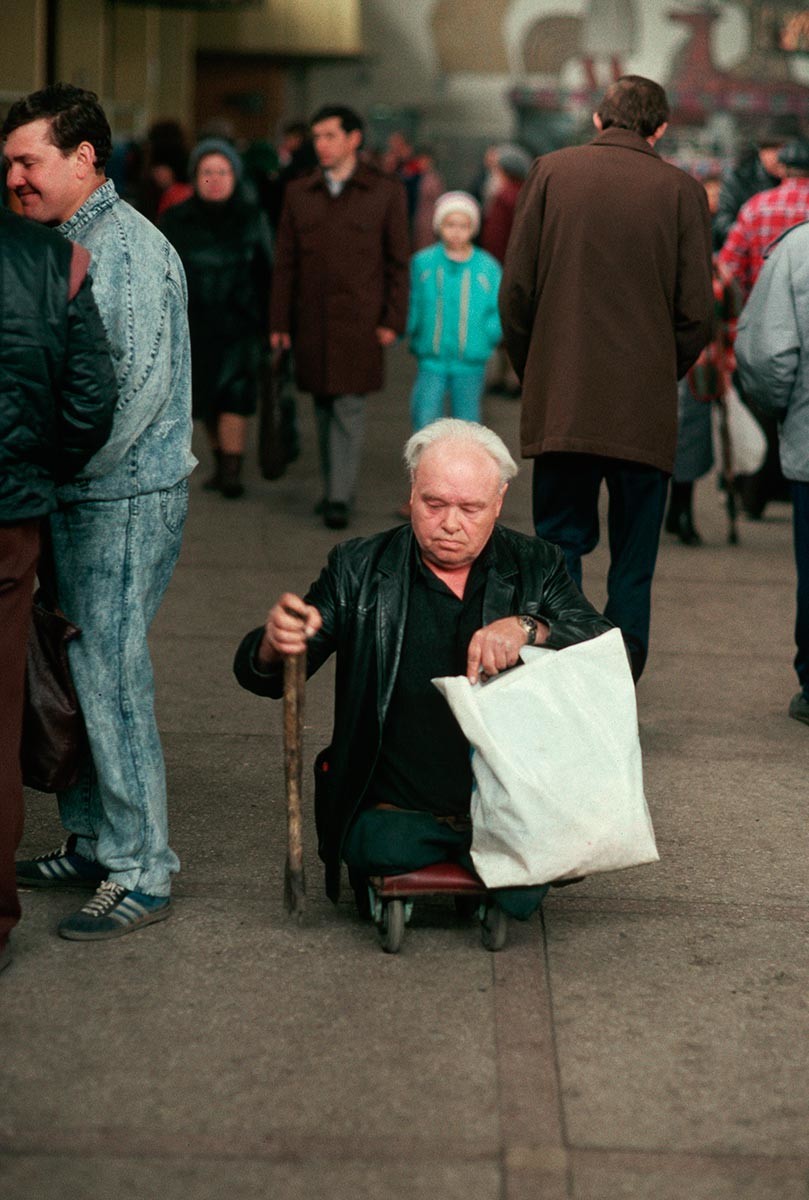
A disabled man at a market in Novokuznetsk, Siberia.
Getty ImagesOn the streets of the post-war USSR, it was often possible to meet disabled people on “gurneys”. They were simple boards on four wheels made of bearings. Legless invalids rode them, starting from the road with pieces of wood, equipped with handles and wrapped with rags for better traction. There were not enough wheelchairs for everyone in need. Moreover, the production of comfortable wheelchairs and strollers in the USSR had not been established.
Valery Fefelov was a disabled worker and a leading fighter for the rights of disabled people in the USSR. He lost the mobility of his lower limbs as a result of a spinal fracture at the age of 17. Valery, then an electrician-installer, fell from the power line, due to the fault of colleagues, who did not de-energize it in time.
Fefelov recalled in an interview with the German ‘Korrespondent’ newspaper: “Soviet strollers are heavy, their weight reaches almost 40 kg, they are bulky and inconvenient to use. They can’t be folded, so you can’t take them with you on the road. They do not fit into the elevator, the doorways are narrow for them and even a few steps at the entrance of an apartment house become an insurmountable obstacle.”

Several people helping a disabled vet of the war in Afghanistan to get up the stairs in his wheelchair, 1990.
Oleg Lastochkin/SputnikThe standards of Soviet housing did not provide for the life of a person using a wheelchair – there were no wheelchair ramps by entrances and on the streets, in clinics and other state institutions and a disabled person’s trip to another city by train required physical assistance of several grown men. The struggle of disabled people for their social rights was complicated by the elementary inability of the disabled person themselves to visit social care institutions.
In the 1950s, the authorities began to “get rid” of the disabled of WWII, transporting them to specialized sanatoriums – the most notorious of them was on the island of Valaam. Of course, many disabled people were left without relatives at all after the war and sanatoriums and specialized institutions were often the only place where they could receive at least some help and shelter over their heads. Those who stayed with their families were doomed to a permanent stay in the apartment.
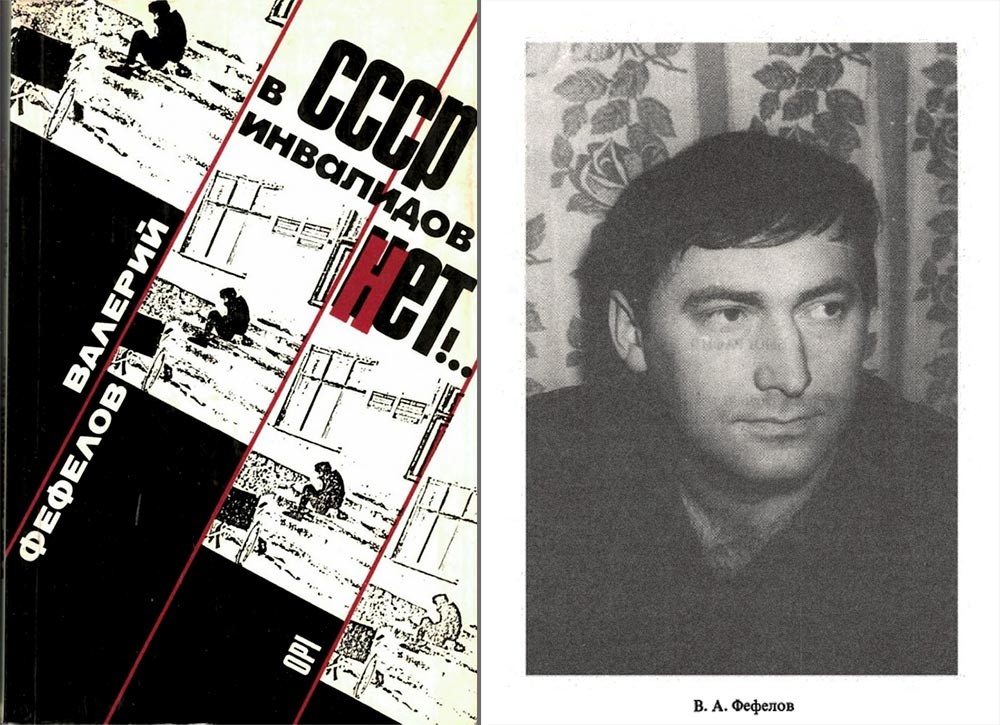
Valeriy Fefelov (R) and the cover of his book, "There are no disabled people in the USSR" (L)
V. FefelovaDisabled peoples’ access to means of facilitating everyday life – for example, to simple and mechanized prostheses, wheelchairs and cars - was extremely difficult. Wheelchairs of extremely poor quality were officially to be provided to the disabled free of charge for five years, but you had to wait several months, or even years, to receive one. There were simply no mechanized household assistants and prostheses in the USSR and their purchase from abroad was prohibited during the Cold War.
Disabled people were paid pensions that were always lower than average salaries and did not allow them to live independently. Valery Fefelov points out that even in the 1980s, the maximum pension for the highest disability group was 120 rubles per month - with an average salary of 170 rubles and the cost of a man’s coat around 150-200 rubles. Disabled children, at the same time, had an “allowance” of 20-30 rubles per month. “Social welfare sent me help – a bag of stale crackers. But now I’ve got another problem: I’ve no false teeth to chew them!” Soviet disabled people often had a wicked sense of humor.
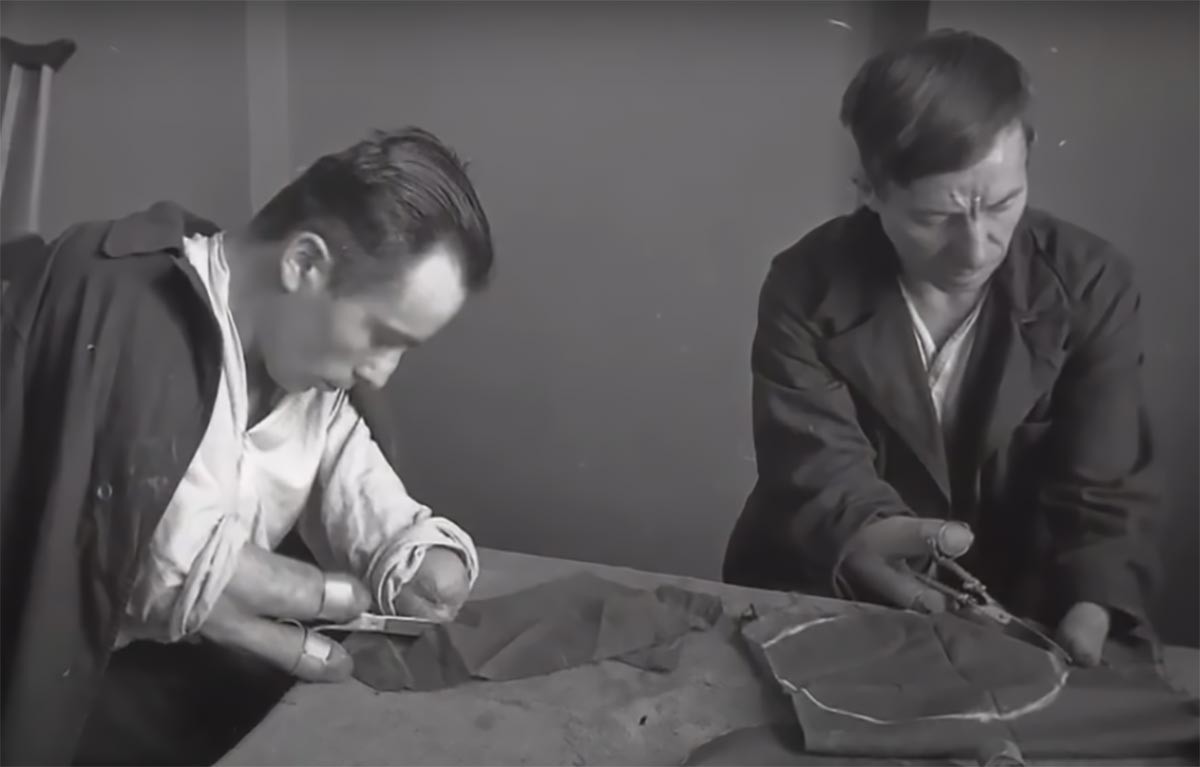
Disabled people at work
'Chtoby pomnili' project/YouTubeUnder the circumstances, a huge number of disabled people were forced to stay in “homes for the disabled”, which were under the jurisdiction of the Ministry of Social Security. The disabled were actually removed from the Soviet legal system.
Valeriy Fefelov, who did not want to put up with the disenfranchised position of a disabled person in the USSR, began to apply to the state institutions and maintain correspondence with other disabled people. In his book titled ‘There are no disabled people in the USSR!’, published in Germany in 1986, Fefelov describes the conditions in which disabled people existed in Soviet specialized institutions.
“The ‘Instruction on the internal regulations of disabled people’s homes’ prohibits them from having their own children,” Feflov wrote. “In the case of the birth of a child, it is forcibly taken away from its mother and placed in the care of the state. Therefore, when people with disabilities of both sexes get to know each other closely, they are usually placed on different floors or buildings. The same ‘instruction’ provides for the placement of mentally healthy disabled people together with the mentally ill.”
“The care is bad, it’s cold as in the basement,” one of his correspondents told Fefelov. “The food is bad. Rotten herring and eggs, porridge without oil — it turns you off from such food. Disabled people hang themselves, drown... a river is nearby.”
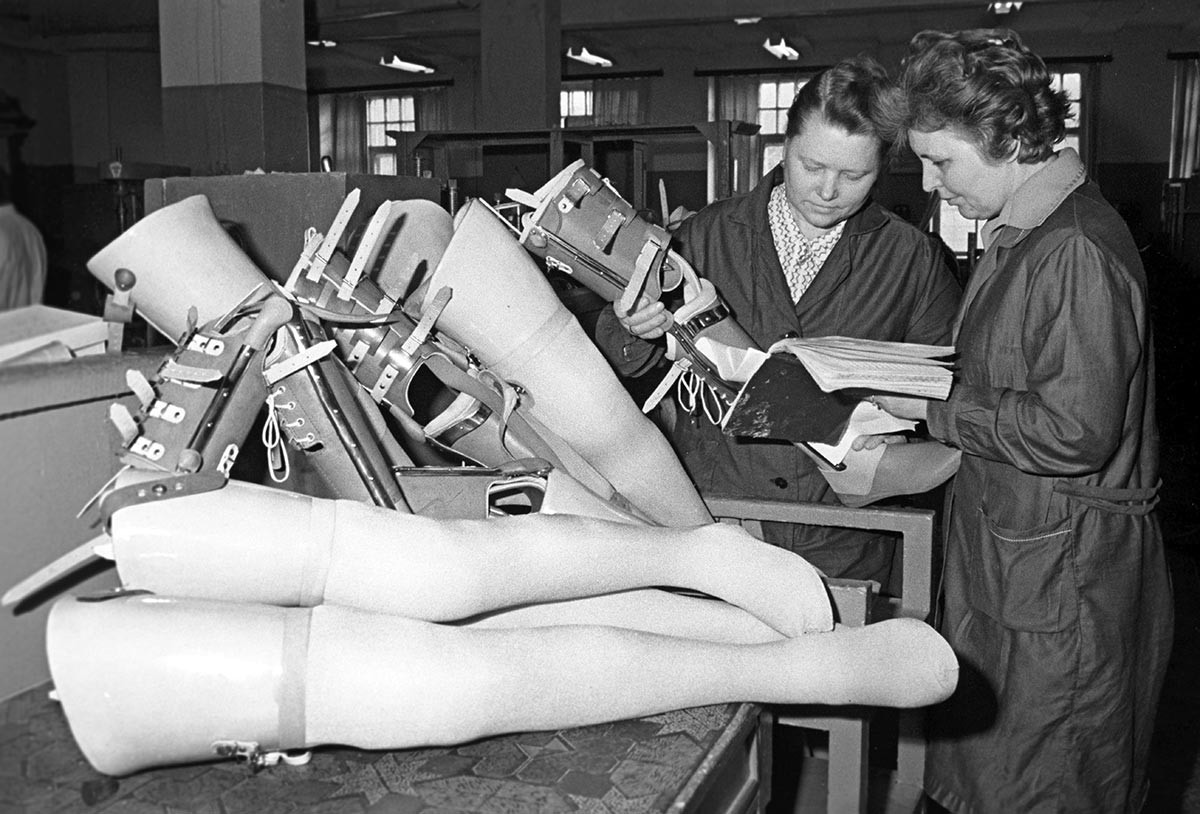
Soviet production of prosthetic legs.
A. Cheprunov./SputnikWas it really impossible to just leave such a place? For the sedentary disabled, it was often physically impossible – and those who could walk independently were simply not provided with shoes or outerwear.
The lawlessness that was going on in the “homes for the disabled” could not be challenged in Soviet courts – when Fefelov wrote to the People’s Court of Saratov Region with a complaint about the beating of his pen pal Gennady Guskov in the local home for the disabled, he received the following reply: “The homes of the disabled are under the jurisdiction of the Ministry of Social Security and are not subordinate to the court.” At the same time, the Ministry of Social Security was run absolutely authoritatively - suffice it to say that, for example, Domna Komarova was an irremovable minister for 21 years, from 1967 to 1988.
As a result, the state learned how to earn shamelessly on the disabled - contrary to its main slogan: “From each according to his ability, to each according to his needs”, enshrined in the constitutions of the USSR of 1936 and 1977. Disabled people glued bags and envelopes, collected beads, latches, door and window hinges, electric switches, wove string bags and funeral wreaths, knitted woolen clothes… All this was then sold by the state in department stores.
Fefelov gives approximate statistics of the 1980s: “In the Russian Federation alone, 58 thousand disabled blind people work at 200 specially created educational and production enterprises. These enterprises annually produce products worth an average of 540 million rubles. Thus, each member of this society produces products worth almost 10 thousand rubles a year.” Compare this with the size of disability pensions, the right to receive which also had to be regularly confirmed by the social security authorities. The payment for the disabled person’s work itself was beggarly, for example: “The operation of (manually) attaching a metal peg to a shoe buckle is paid at a rate of 47.3 kopecks per 1,000 pieces.”
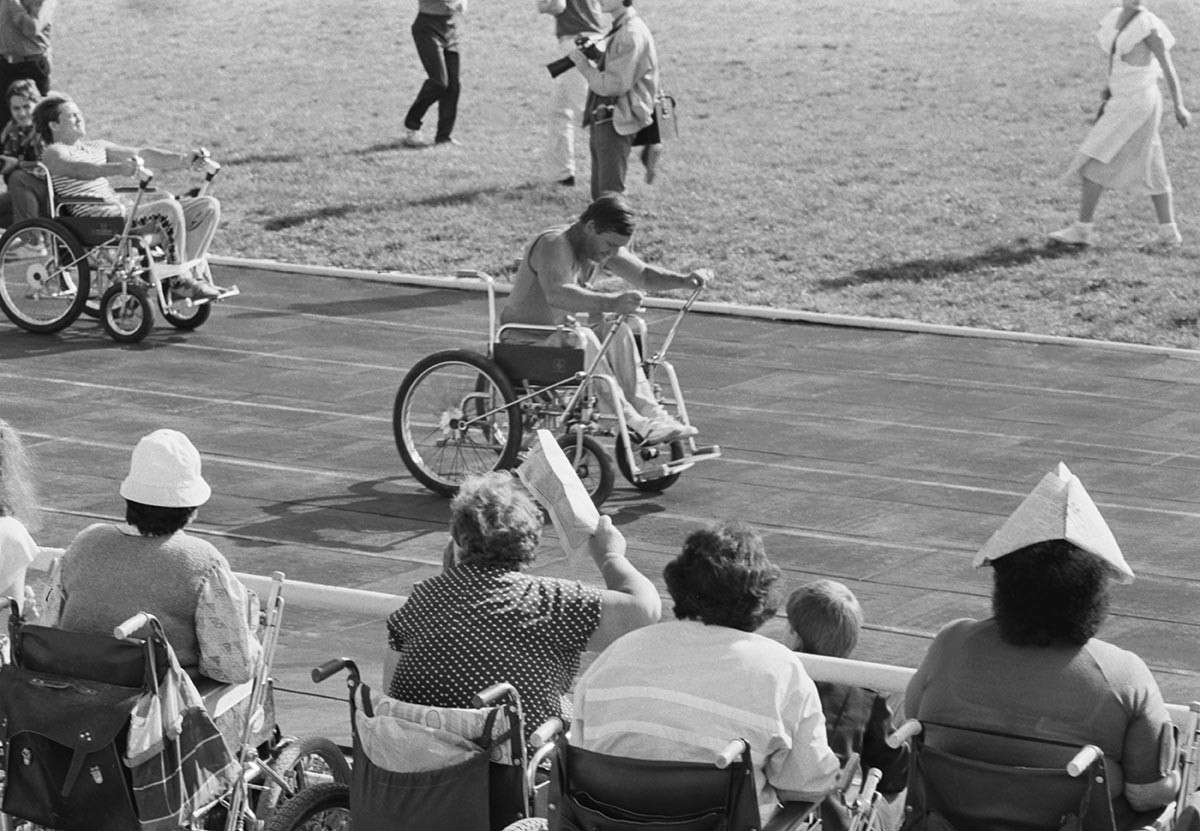
A disabled person takes part in a race on wheelchairs, Crimea, 1989.
Alexander Obukhovsky/TASSAs for the sports rehabilitation of disabled people, it was completely absent in the USSR. Fefelov writes that the Soviet government responded to the request of the organizers of the sports games in Stoke Mandeville (Great Britain) about whether Soviet disabled people would be able to take part in these international competitions with: “There are no disabled people in the USSR.” The same response was received by the organizers of the Olympic Games for the Disabled in Toronto in 1976. “Can you imagine - disabled people and sports?! To arrange wheelchair races or force them to throw balls is inhumane in relation to the disabled and to the audience…” said a KGB colonel Vladimir Shibaev. The words “there are no disabled people in the USSR” became the title of a book by Fefelov, who, in 1982, was forced to leave the USSR, due to the persecution of the KGB.
In 1976, the Moscow Helsinki Group distributed a document titled: ‘On the situation of disabled people’, which tried to draw the attention of the world and Soviet public to the egregious situation: “Disabled people are actually deprived of the right for decent work, education, recreation, good nutrition, treatment, normal personal life, physical fitness and sports.” This only attracted the attention of the authorities to dissidents from among the disabled. And, in 1978, Fefelov and his supporters created the ‘Initiative Group for the Protection of the Rights of Disabled People in the USSR’ and began publishing an information bulletin. The group demanded the indexation of disability pensions, began the production of mechanical assistants and comfortable wheelchairs, the organization of an inclusive urban environment, as well as reforms of the social security system for the disabled.

Paralympic Games 2014. Opening Ceremony. Russia Team.
Andrey Golovanov, Sergey Kivrin/Legion MediaThe group’s attempts to establish contact with international organizations of disabled people resulted in a stream of letters and invitations that began to arrive from abroad. This was the reason for the persecution of Fefelov and his supporters. Their apartments were raided and searched, their family members were summoned to the KGB and persuaded to influence the fighters for their rights. In 1983, Fefelov was expelled to Germany, where he and his family received political asylum, while in 1984, Elena Sannikova, another member of the group, was sentenced to one year in prison and four years in exile.
In 1988, the USSR Paralympic team took part in the Paralympic Games for the first time – and, with 55 medals, took 12th place (21 gold, 19 silver and 15 bronze medals) in the overall standings. And although today many problems of Russian disabled people are still waiting for their solution and many social support institutions are still too reminiscent of Soviet times, the struggle of Soviet disabled dissidents was not in vain. In 2006, the Russian national team topped the overall standings at the Winter Paralympic Games for the first time. Valery Fefelov lived to witness this victory – he died two years later, in 2008.
If using any of Russia Beyond's content, partly or in full, always provide an active hyperlink to the original material.
Subscribe
to our newsletter!
Get the week's best stories straight to your inbox